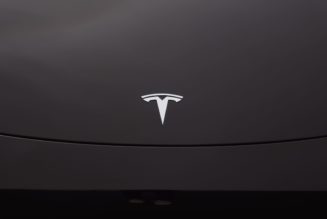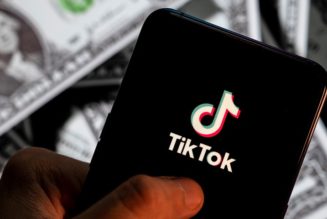
Waymo is working on self-driving taxis, which is a huge deal. Ride-sharing apps like Uber and Lyft have remade cities, allowed people to give up their cars, and generally connected the buttons you push on your phone to real things happening in the world more directly than almost any other app. Just this week, Bank of America’s trading desk sent out an investor note saying Uber was the most transformational thing to happen to the phone in the past decade.
But simply getting a car to show up where you want isn’t the endgame. The endgame is to make a robot show up to your house — a self-driving car. Self-driving cars promise to even more radically remake cities and suburbs, decrease overall car ownership, and let commuters take back hours of their time as they travel. It’s a big dream, and we’ve talked to a bunch of tech and car CEOs on Decoder about it in the past year. All of them are working on self-driving, but no one’s really close yet.
But then there’s Waymo. Waymo has been quietly testing self-driving minivans in Phoenix for a few years now, and they are about to launch a pilot program in San Francisco. These are basically heavily modified Chrysler Pacifica minivans and Jaguar I-Pace SUVs that can drive themselves. Many Waymo rides happen without anyone else in the car — no safety driver, nothing. Just you and the robot.
I talked to Tekedra Mawakana, co-CEO of Waymo, about expanding Waymo’s service to other cities, the hurdles in place, and how she thinks the company will make money over time. We also talked about the regulatory issues the industry faces as it tries to roll out self-driving more broadly, and whether things like Tesla’s “full self driving” are confusing the issue or helping it.
This was a really fun conversation made even better because we recorded it live, onstage at Code Conference.
This transcript has been lightly edited for clarity.
I’m very pleased to be talking to Tekedra Mawakana, the co-CEO of Waymo. Welcome, Tekedra. Hello.
Hi.
How are you doing?
Great, thank you for the warm welcome.
Yeah, doing this in front of a live audience is very exciting. Alright, Waymo. Self-driving cars, what’s taking so long?
We’ve been at it for a while. I would say it’s the engineering challenge of our generation. That is what’s taking it so long. To do it, and do it well, I think means two things. One, that safety is at the core of everything we do. And safety takes time. And secondly, we actually have to learn along the way. It’s like a process of discovery.
What’s funny to me is when I think back to when I joined Waymo almost five years ago. And I remember thinking, “Oh, product market fit’s probably done. It’s ready to commercialize.” And I realize, no, you actually have to put the technology into the real world and that’s how you get it ready. That’s what we’ve been focused on doing, and learning, and receiving feedback from, now, riders in Phoenix.
I’m very curious to ask how that feedback’s going. But first, you’re new to the co-CEO role. You only started in April. And a co-CEO used to be an unusual arrangement; now it’s kind of a trendy arrangement. What’s the split with you and your co-CEO?
My co-CEO, Dmitri Dolgov, is one of the founders of Waymo. He’s one of the people who has been working on this problem for his whole career. He was the CTO before this role. I was the COO. And so we still focus primarily on the two areas that we know the best. I think about how you commercialize, deploy the technology, introduce it to communities, and he focuses on building the Waymo Driver. Then we come together to figure out what’s the best strategy: How do you sequence it? What’s going to be the rollout plan? And so far it’s going great. We have very different and complementary skill sets.
I think there’s the capability, what the technology can do, and then there’s what you’re allowed to do with it, which seems challenging at this point in time. I ask this question of every executive that comes on Decoder, which is a plug, how do you make decisions?
How do I make decisions?
What’s your strategy for making some of the complicated decisions you have to make?
It’s something that I’ve had to relearn in my time at Waymo. I like using data to make decisions. And I think when you’re introducing a new technology, introducing a new business model, introducing consumers to an experience that’s never existed before, it’s really about getting comfortable knowing when you have enough data and also getting comfortable with your own gut. And so I say one of the things at Waymo that people get out of it is this reinforced sense of your own internal guide. That’s what I use a lot now because it’s pioneering. There isn’t a playbook. No one’s done it before. We’re figuring it out as we go along. It requires a lot of humility and a lot of openness around learning. And so I learn, I listen, I make a decision. If it’s not the right decision we pivot, and we keep going. And so really having the mindset that this is a learning journey.
The stakes are really high in this particular learning journey.
Absolutely.
You’ve got people in robot cars, going places, taking rides. I want to talk about the technology and then I want to talk about what kind of business you’re going to build with it.
Yes.
Let’s start with the tech, is the Waymo Driver ready? Could you just deploy it and give people rides right now? Is the bottleneck regulation and safety, or are you still working on it?
The Waymo Driver is in the world as we speak today. We have a service called Waymo One, it’s in Phoenix, Arizona, and anyone who goes there can download the app and hail a ride to take them from point A to point B. When the car shows up, it’s empty. There’s no one in the car. There’s not a person in the car who’s not driving. There’s no one.
The wonderful thing about the service in Phoenix, Arizona, is people get to have their own space. They’re in there, they get to have conference calls, do whatever they want to do. So it’s happening. I want to say that: the future is already happening.
In a tiny part of Phoenix, Arizona.
In a 50-square-mile territory, which is also the size of San Francisco, so I’m not going to concede that it’s tiny. Yes, it is a specific jurisdiction that we’re working in, but that’s the way to do it safely. Also, we have launched a trusted tester program in San Francisco. So now residents of San Francisco are having the chance to try out our service too.
Do you think your core technology stack is done and it can be deployed at scale? Or are you still learning and testing that part of the system?
I think that’s one of the ways in which this is quite different. It’s not a one-and-done, and it’s also not, get the technology up to a certain point and now we’re ready to deploy it everywhere. Geographically, street lights are different, weather is different, there’s a lot about each domain that’s quite different. What you’ll see us do, and what you’ve seen us do now that we’re operating in two fairly different environments, that gives our tech stack the opportunity to learn. We’ve driven over 20 million miles on public roads, autonomously, across 25 cities. Over 20 billion miles in simulation, which is quite important. And so this is the way the Waymo Driver learns and all of that learning is shared across the fleet.
That area in Phoenix, which I grant you is quite large—
Thank you.
—the boundaries of that area have not expanded inside of Phoenix for quite some time. You’re starting to launch in San Francisco. Should we see a faster ramp of market expansion now?
I think the question is, what is the goal?
I just push a button and a robot comes and gets me?
Yeah, well that is the goal for the customer. Our goal in Phoenix was to learn. Malls have seven to 12 entrances; which one do you expect to be picked up at? The reality is when you give us that address, we may not be at the same entrance you are and when there’s not a human in the car for you to call, or to call you. So what are the operational challenges associated with actually having a fully autonomous service? That’s what we’ve been doing.
We haven’t been expanding, we’ve been taking the feedback from our riders and making the service more and more delightful. That’s what we’re also doing in San Francisco. Now, we have riders, some have lived in the city for a really long time, and they’re excited to provide feedback to bring this technology to market.
You said 20 million miles, which is Waymo’s favorite statistic. You have driven more miles than anybody else, but the problem you’re describing is very local. It’s very small, you could get 100 million miles and you still might not know where the exit of the shopping mall is. Is that a challenge that you’re splitting? Are you attacking that differently?
Yes, so when we talk about the number of miles that we’ve driven, that’s across all 25 cities, and that’s really important. We’ve tested rain, we’ve tested heat in Sun Valley, snow. Those miles are training the Driver for scenarios that we’re not currently operating a service in. When I talk about pickup and drop-offs, or the chaos in a parking lot, those are very specific to the service that we’re offering and the feedback that we’re getting.
There are a lot of self-driving companies on various parts of the stack. Some of them are deeply integrated with cars. Some of them are far away and they’re just selling a sensor. You have a line, right? The main bulk of your fleet is modified Chrysler Pacificas. Now you’ve got I-Paces. Do you think that you have a challenge of how the car itself changes once it can drive itself? Or are you happy to leave the cars to someone else?
We’re really happy to partner with OEMs for the cars. Like you said, we partnered with Stellantis and JLR. They’ve been building cars for over 100 years. We actually think figuring out how to make the Driver safer is a really exciting challenge and so that’s what we’re focused on.
Do you think about the actual wheels, drivetrain, crash impact stuff, or is that kind of a commodity to you? Can you swap those in and out?
I think the underlying base vehicle is in and of itself an evolving platform. I think that’s the way to think about it. Right now we see all of this innovation around EVs and despite 100 years of internal combustion engines trying to become more efficient — gasoline engines are only about 25 percent [efficient] and diesel about 33 percent. Now that we have EVs, they are over 95 percent. That’s an innovative platform. It’s just not the one we’re focused on.
The one we’re focused on, I’d say, has three sides of innovation. First is building the Driver. Can you actually take the human out and have the car drive itself? Yes, we’re doing that and it’s very exciting. Second is what are the business models that unlock once you can do that? And so we’re focused on deploying the Waymo Driver across three main lines of business today. That’s Waymo One, which is ride-hailing, as well as Waymo Via, which is long-haul trucking as well as local delivery. Eventually we will also focus on personal car ownership, which is when you license the technology.
But then the third part of this innovation is actually being less comfortable with 40,000 people being killed on our roadways every year. Really deciding that if 94-ish percent, give or take, of those are caused by human error, then we have the opportunity to innovate and remove the human from the equation. Which means you don’t rely on the human to be alert at any point. You don’t need a driver’s license. You get in a car and the Waymo Driver takes you where you need to go safely.
We are on stage after Elon Musk was on stage. Tesla has something called full self-driving, which is Level 2-plus on this complicated scale of self-driving that no one understands. You’re Level 4. You want to go to Level 5. Do you think that the full self-driving, driver assist stuff where people tune out, is poisoning the well of the self-driving conversation at all?
In the early days, I guess 2013, the Google self-driving car project [before it spun out into Waymo] focused on auto assist technology. What we learned in our experience is people trust the technology beyond its capabilities. We witnessed employees actually shaving, and sleeping, and plugging into the backseat, even though we told them that was beyond the capability. And so I think the problem is, we’re human. When we get in the car we have other stuff to do. We’re leaving home and we need to get to work but we have three emails we meant to send, but the cat ran out, or whatever.
And so I think the problem is you have to give people the chance to just do what they want to do, which is not focus on driving. And so what we’re focused on, the reason we’re focused on Level 4 is that we believe it is the only way to safely deploy this technology in a way that improves road safety. And that is the mission that we’re built on. It’s a very different business model when you’re talking about driver assist. I have that in my car. It makes me stay in the lane. It’s delightful for what it is, but it isn’t something that allows me to tune out.
You mentioned that one of the business models you’ll pursue in the future is licensing the technology. Is that something you’re actively going to pursue with carmakers? Buy the Waymo stack, put it on your cars, take the steering wheel out, sell the cars?
Yes, we have already announced partnerships that we have along those lines, but we’ve been very open that obviously if you buy a car, you want it to go everywhere, right? You want us to be able to say it’s Level 5 and you can go everywhere and you can face any conditions. So it’s naturally later, it’s not soon.
Are you competitive in that market? You’re going to have some partnerships, but are other companies focused on partnering too? Are you winning those deals or is everyone just signing the, “Hey, we have to have a bunch of suppliers. Let’s see who wins this stage of that market.”
I think that until people create a Level 4 system, it’s really hard to start negotiating viable deals about a Level 5 capability. I can’t speak to what people might be doing, but I know that there isn’t anyone else offering a public service today with Level 4 technology.
Would you license the Level 4 system? There are Chrysler Pacificas, and Jaguar I-Paces, is there some reason I can’t buy a hot-rodded self-driving Chrysler Pacifica today?
We would not license that. One, because as I said, we’re in the process of learning. Two, we’re operating it as a fleet. We’re not licensing the technology. And then three, there is a map. You, yourself, said it’s a particular jurisdiction. I think carmakers would say to us that that’s not really a viable product for them.
We’ve got a market of at least one. I bet quite a few people in this room — who doesn’t love the Chrysler Pacifica? Let’s talk about the actual business, which is Waymo One and then the trucking business. Is that business baked, the revenue models set, you understand how it’s going to scale? What have you learned operating it at the scale you have that you’re going to need to change as you expand?
I think one of the reasons that we do the early rider — in Phoenix we had an early rider program, now we have the riders in San Francisco — is actually learning, what do people care about? Everyone’s thinking about sustainable cities; “What’s the city of the future and how will EVs help shape that?” When you think about the trade-offs, we want transportation on-demand, when we want it. The reality is that will lead to more congestion. So will people make trade-offs? Will people say I’ll take an additional eight minutes to get that car if it means it’s not idling and congesting my city? And so we have a lot to learn about these business models and that’s what we’re testing.
I’m not going to sit here and say, we’ve figured out all of the various commercialization opportunities for the next 20 years. We’re actually listening and seeing how people will value the service accordingly. That’s testing pricing, all of the normal corporate strategies, but really, really having customers at the center of that.
Out of the data you’ve collected so far in Phoenix, what has surprised you the most about what customers want and what is the change you were not expecting to make?
I think one of the surprises for me has been the communities of people who feel very excluded from transportation today. I’ll just give two examples that are on two different ends of the spectrum. One are people who’ve had to have their keys taken away because they’re older. Now those families are like, “Oh my goodness, we get to avoid that conversation.” That’s a tough time. And then on the other end, we partner with the Foundation for Blind Children. These are kids whose 16th birthday doesn’t mean the same thing as everyone else. And so really giving people independence where they don’t need mom, or dad, or girlfriend, or boyfriend to carry them around has been a delightful surprise.
Have you had to adjust pricing? Are people willing to pay what you thought they were going to pay?
People are willing to pay. We have a lot of demand. We don’t use our entire fleet for customer service. We’re still using some of the fleet also to advance the Waymo Driver. And so we have demand beyond the supply that we’re offering in the market.
One of the reasons I ask about the pricing question is, and I’ve briefly talked about this before on Decoder, once you get to self-driving cars — and if you’ve ever ridden in one, it is remarkably boring, by design — but once you get to that stage, what is going to differentiate you from every other self-driving robo-taxi service that exists?
Value proposition, right? We, as consumers, we go to the experience that’s the one we think is the best. It’s certainly not only because there’s one. That’s some of what we’re thinking about right now. When people get into Waymo One, one of the early observations we made, despite the fact that you can get into a ride-hailing service and take over their music, people don’t. It’s a very small percentage of people who want to do that. It’s your car that I’ve just entered. I’m sitting in the back seat, you’re in the front seat. You’re driving me. I’m only going to be in your car for three minutes. People get in the Waymo One, they immediately start playing their own music. Why? Because it’s their space and they have this privacy. They can get on a phone call. They’re not speaking cryptically, etc. And then for people who want to safely get their kids home after they’ve been pub crawling in Chandler, they’re able to do so. Their 21-plus-year-old kids, just to be clear.
But at the end of the day, if this technology is available for sale from you or other suppliers, Uber will have it, Lyft will have it; the drunk kids coming home from Chandler, they’re just going to take a car home, right? What will make them pick you? What will keep your price high relative to everybody else?
I think one of the premises of your question is that everyone will have it because everyone will have solved this problem. Versus everyone will have it because a few companies will solve this problem, and then those will be our partners.
There we go.
I would think of this as, one, how will we win? We will actually figure out how to scale this Driver. And once you figure out how to scale this Driver, the question will be, will we try to solve every mobility opportunity directly, or will we partner? We’ve already shown an appetite for partnering in Phoenix. We have a partnership with Lyft and we’ve put some of our cars in their fleet. That’s giving us the chance to see the difference between when someone opens a Waymo app and they know they’re going to receive our service, versus when someone opens a Lyft app and then they’re told, “Hey, there may be this opportunity to take this ride. Are you open for that? Yes or no?”
I want to keep pushing this a little bit. That moment is still surprising. You open the Lyft app. One of the greatest innovations in the past decade is you can summon a Toyota Camry at will, anywhere in the world. When that experience turns into the robots coming to get you, obviously that’s surprising. If you look 10 years from now and the robot’s always coming to get you, how do you solve that challenge?
You make me think about a time when I was in law school and I lived in New York and my mom was in Atlanta. When we talked on the phone I paid long-distance phone bills — and maybe that’s just really dating myself, but it was a lot of phone bills. I thought about this recently; nothing’s really changed about the phone, right? Obviously now they’re smartphones, but the reality is the entire business model now is about how do I just stay connected to loved ones with my smartphone without monthly charges, without long-distance charges, without these limitations? I think the question that you’re asking is, how do you make sure that what you’re creating is delightful enough that it feels like a change and it feels like an innovation? That’s what we’re focused on.
When I’m in a Waymo car, it’s a consistent experience. We own the fleet. I get in the Jaguar I-Pace, it’s a beautiful ride. It’s clean. I know exactly what to expect. I play my own music. If we look ahead however many years, what is that car going to tell me about me when I get in, because I’ve been using it so often? What does it know about my route? Where do I tend to go on Friday nights? What do I like in my coffee? There’s so much to think about from a commercialization perspective and it’s really what keeps me excited.
So there’s an exciting version of that. I’m duty bound to ask you about the other version. Which is, the car rolls up, it has no steering wheel. It’s full of screens and advertising is playing at you. Is this all an effort to just make more Google advertising inventory?
That’s certainly not what I spend any of my time focused on. We are heads down, focused on this and the business model. When I think about the vehicle form factors of the future, I’m thinking about us doing Code Conference in a car where we’re facing each other over a dining room table. That’s exciting to me and so [advertising is] not what I’m spending my time thinking about.
I love that you’re duty bound to ask, so thank you.
Waymo is part of Alphabet. What is that relationship to Google like?
The week Waymo spun out from Google was the week that I interviewed. They said, “Alphabet’s going to be here. We’re going to support you.” That has been my experience since joining. Obviously they’re our lead investor. We took external funding last year for the first time, and again this year. Even having these world-class investors that have expressed confidence in us, having Alphabet as our primary investor and supporter has been invaluable.
So obviously Sundar Pichai is now the CEO of Alphabet and Google. When was the last time Larry [Page] and Sergey [Brin] came by and just checked in on Waymo?
Larry and Sergey drop by whenever they’d like, but we’ve all been sheltering. We’ve all been sheltering so it’s not as common an experience as it was before COVID.
Are they taking an active interest in the business?
Always.
I want to ask you about regulatory issues. We’re both ex-lawyers so I made sure we didn’t burn the whole 25 minutes on regulation. What are the blockers right now? Are governments ready for this? Do they have the frameworks in line to do this right?
Yeah, I think at every level of government they’re figuring it out. In the US, I think, NHTSA [National Highway Traffic Safety Administration] has had a voluntary framework primarily. At the state level, every state is a little different, but most of them are motivated to figure out how to do [self-driving], how to enable it, how to enable it safely with varying degrees of concern. And same thing at the city and local level. In Arizona, for example, we had an executive order that we were operating under for those initial years. And then in the legislative session this year, Waymo and the policy team led the charge to get that through the legislature and codified into law. That’s just one state, but there are a lot of examples like that. And I think, there’s a sort of bipartisan recognition that this train is pulling away from the station. The question is how, not whether.
You mentioned NHTSA, they’ve got a proposed standard for crash reporting out of autonomous vehicles. Do you think that goes far enough? Do you think that needs to be standardized? Is that a differentiator for you if everyone’s talking about how safe their cars are?
I think that a holistic approach to how companies are able to establish their safety case would be ideal. And I say that because all of our technology’s going to be different. To some degree, if you put a multiplier and you say you have to report how you are assessing safety within your technology and make it available to the public — that’s what we’ve done. Last October, we issued information about the crashes that we’ve had in Phoenix. The reason we did that is we wanted to build not only confidence, but also show that our technology performs better than humans under those same scenarios.
Cars and tech are pretty male-dominated fields. You now run one of the leading self-driving car companies. You’re trying to change regulations to enable your business to succeed. How has this been for you?
It’s been the ride of a lifetime.
We’re done. Good night, everybody. I tried my best.
Sorry, I just couldn’t help myself. No two days are the same. It’s really, really creative problem-solving, which is something I love. It’s a fantastic team of people who want to make a difference in the world and so it’s a great way to spend the days.
For you personally, you think the space is opening up to be more inclusive?
I think we have work to do, and we’re focused on that.
Very cool. Alright, let’s see if we have any questions.
Hi, Charlene Chang from Vox Media. You’re in Phoenix and San Francisco, are there other markets you guys are looking to test in and are you looking to test different terrains, climates, things like that?
Yeah, we have tested other places. So we’ve tested, like I said, some snow in Detroit, as well as thunderstorms in Miami, but we haven’t launched an actual service that riders would be able to use in any of those jurisdictions yet. And we haven’t made any public announcements about what’s coming next.
Let me follow up on that. Do you think you can run this thing in Denver in the snow? Have you tested that stuff such that you’re confident you can do it when it’s time?
No, it’s early days for that. It’s early days; it’s a vehicle platform question also. That’s why you don’t see us putting riders in the cars in those jurisdictions yet.
Okay. Thank you very much. It was delightful talking to you.
Thank you.








